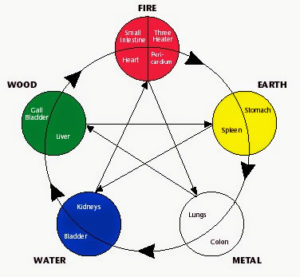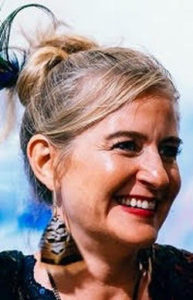“Countless words count less than the silent balance between yin and yang” - Lao Tzu, Tao Te Ching
Acupuncture is an ancient medicine. Its first mention is over 10,000 years ago, and its first major medical text, Huang Di Nei Jing (Inner Canon of the Yellow Emperor) is over 2000 years old. Every culture has had some form of acupuncture in its medicine cabinet, and a few forms of acupuncture styles remain to this day.
Traditional Chinese Medicine
While there are over 365 acupuncture points, clinically, Traditional Chinese Medicine relies primarily on 50-100 points. Diagnosis are based on symptom presentation as well as listening to the pulse and observing the tongue. Diagnosis aims to find the root of the symptoms, and points are selected according to defined point functions—on the body, ears or scalp—and meridian theory. Needling can be superficial or deep, ranging from 0.2 inch to 6 inches, depending on area and indication. Occasionally, electrical stimulation is used to augment the treatment.
Japanese Acupuncture
Within Japanese Acupuncture, there are several famous schools of thought, yet they tend to share the same philosophy of gentle needling, using fewer needles, shallower insertions, and choosing points that have inherent relationships with each other. Occasionally, ion pumping cords are used to facilitate the balance of ions across the body. On rare occasions, for those who are needle sensitive or for the very young or very weak, specialized tools (teishin, choki and choto shoni-shin tools) are used above the acupuncture points.
It may seem unusual that acupuncture can be so effective without ever needling the point. In Chinese, the word for "point" is xue, which means "cave." As with any cave, this word communicates a 3-dimensional space. The needle rests in the cave while the shoni-shin tool hovers at its entrance. Both tools are effective in creating movement of the energy at the point to restore health to the meridian.
5-Element Acupuncture
Seeing health as a garden, Chinese Medicine ascribes element from nature to organ systems. The five elements are:
- Fire = Heart, Small Intestine; Triple Burner, Pericardium
- Earth = Spleen, Stomach
- Metal = Lungs, Large Intestine
- Water = Kidneys, Urinary Bladder
- Wood = Liver, Gall Bladder
Each mother-element is said to "promote" son-element (circle in diagram below); therefore, in the Generation Cycle, Fire promotes Earth, which promotes Metal, which promotes Water, which promotes Wood, which promotes Fire. When the mother-element is injured, the son-element may be injured, too. When emotions are charged and stress is high, both of which affect the Liver element, the Heart is often affected.
In order for there to be balance, each element also controls another element (star in diagram above); thus, in the Controlling Cycle, Fire controls Metal, which controls Wood, which controls Earth, which control Water, which controls Fire. When the controlling-element is overbearing, or its controlled-element is too weak, symptoms can arise as when emotions and stress (Liver, Wood) cause diarrhea (Spleen, Earth). By harmonizing the Controlling Cycle, one can bring balance to the flow of energy.
Acutonics
In the West, the universe was created with light. In the East, sound creates the universe. Acutonics uses tuning forks with specific frequencies to harmonize the flow of energy. Because sound waves travel faster in water than air and because our bodies are mostly water, the tuning forks create resonance fields within our body. These resonance fields also extend above the body, so the tuning forks also smooth out auric fields surrounding the body (etheric body). The harmonies between the tuning forks create movement of energy which balance the physical, emotional and etheric bodies.
Aroma Acupoint Therapy
Created by Peter Holmes and Tiffany Carole Pollard, Aroma Acupoint Therapy uses pure essential oils on specific acupuncture points to facilitate integration of body, mind, and spirit. For thousands of years, our body has an intimate relationship with plants, and the essential oils contain their wisdom and intelligence—their Jing in Chinese Medicine. Every essential oil has characteristic movements of energy. When placed over acupuncture points, resonance is created between the energies of the essential oil and the acupuncture points, which activate and facilitate proper movements of energy within the body. Because smell is directly wired into our limbic system, deep healing can occur.
|
Tiffany Carole Pollard |
Integration
While many other styles of acupuncture exist—Korean, French-Vietnamese, or Barefoot Doctors, to name a few—depending on symptom presentation, vitality of the patients as well as their preferences, needling prescription may be predominantly TCM, Japanese, or 5-Element in style, or Acutonics or Aroma Acupoint Therapy maybe used in conjunction with or in lieu of needling. The goal is always the same: to return balance between the organ systems, harmonize the flow of energy between the 12 meridians, and be a witness to the eternal dance between yin and yang.


